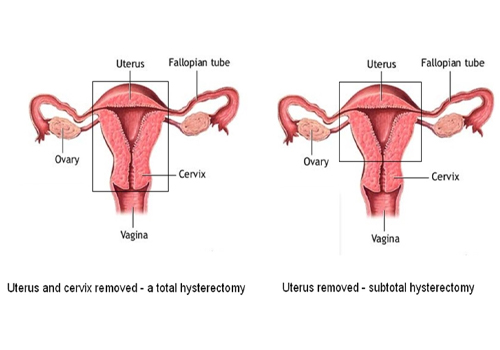
Laparoscopic , Vaginal and Abdominal
The terms laparoscopic, vaginal, and abdominal are often used to describe surgical approaches or procedures related to gynecology or other medical disciplines. Here's an overview of each:
Laparoscopic Surgery
Definition:
A minimally invasive surgical technique where small incisions are made in the abdomen, and a laparoscope (a thin tube with a camera) is used to view and operate on internal organs.
Procedure:
- Performed under general anesthesia.
- Small incisions (usually 3-5 mm) are made for inserting the laparoscope and surgical instruments.
- Carbon dioxide gas is used to inflate the abdomen for better visibility.
Uses:
- Gynecological procedures (e.g., ovarian cyst removal, hysterectomy, treatment of endometriosis).
- General surgeries (e.g., gallbladder removal, hernia repair).
- Fertility treatments and diagnostic purposes.
Advantages:
- Faster recovery and shorter hospital stays.
- Smaller scars and less post-operative pain.
- Lower risk of infections.
Disadvantages:
- Requires specialized skills and equipment.
- Not suitable for all patients or complex conditions.
Vaginal Surgery
Definition:
A surgical approach where the procedure is performed through the vaginal canal, without any external incisions.
Procedure:
- Commonly performed under spinal or general anesthesia.
- Surgical instruments are used through the vaginal opening.
Uses:
- Vaginal hysterectomy (removal of the uterus).
- Pelvic organ prolapse repair (e.g., bladder or rectum).
- Removal of vaginal cysts or fibroids.
Advantages:
- No visible scars.
- Shorter recovery period compared to abdominal surgeries.
- Reduced post-operative pain.
Disadvantages:
- Limited access to certain organs.
- Not suitable for large uteruses or certain complex conditions.
Abdominal Surgery
Definition:
A surgical approach that involves a larger incision in the abdominal wall to access the internal organs directly.
Procedure:
- Performed under general anesthesia.
- A horizontal (bikini line) or vertical incision is made to access the uterus or other organs.
Uses:
- Abdominal hysterectomy.
- Myomectomy (removal of fibroids).
- Treatment of advanced-stage cancers or complicated conditions.
Advantages:
- Provides better access and visibility for the surgeon.
- Suitable for large tumors, severe adhesions, or complex cases.
Disadvantages:
- Longer recovery time and hospital stay.
- Larger scars and higher risk of infections.
- More post-operative pain compared to laparoscopic or vaginal approaches.
Comparison of Techniques
| Aspect | Laparoscopic | Vaginal | Abdominal |
|---|---|---|---|
| Incisions | Small abdominal incisions | No external incisions | Large abdominal incision |
| Recovery Time | Short (1-2 weeks) | Short (2-4 weeks) | Longer (4-6 weeks) |
| Scarring | Minimal | None | Noticeable |
| Suitability | Less invasive cases | Uterine prolapse, small tumors | Large tumors, complex cases |
| Pain | Mild | Mild | Moderate to severe |
| Hospital Stay | 1-2 days | 1-2 days | 3-5 days |
Choosing the Right Approach
The choice of surgical method depends on:
- The specific medical condition.
- Size and location of the affected organ.
- Patient’s overall health and preferences.
- Surgeon’s expertise and available resources.

